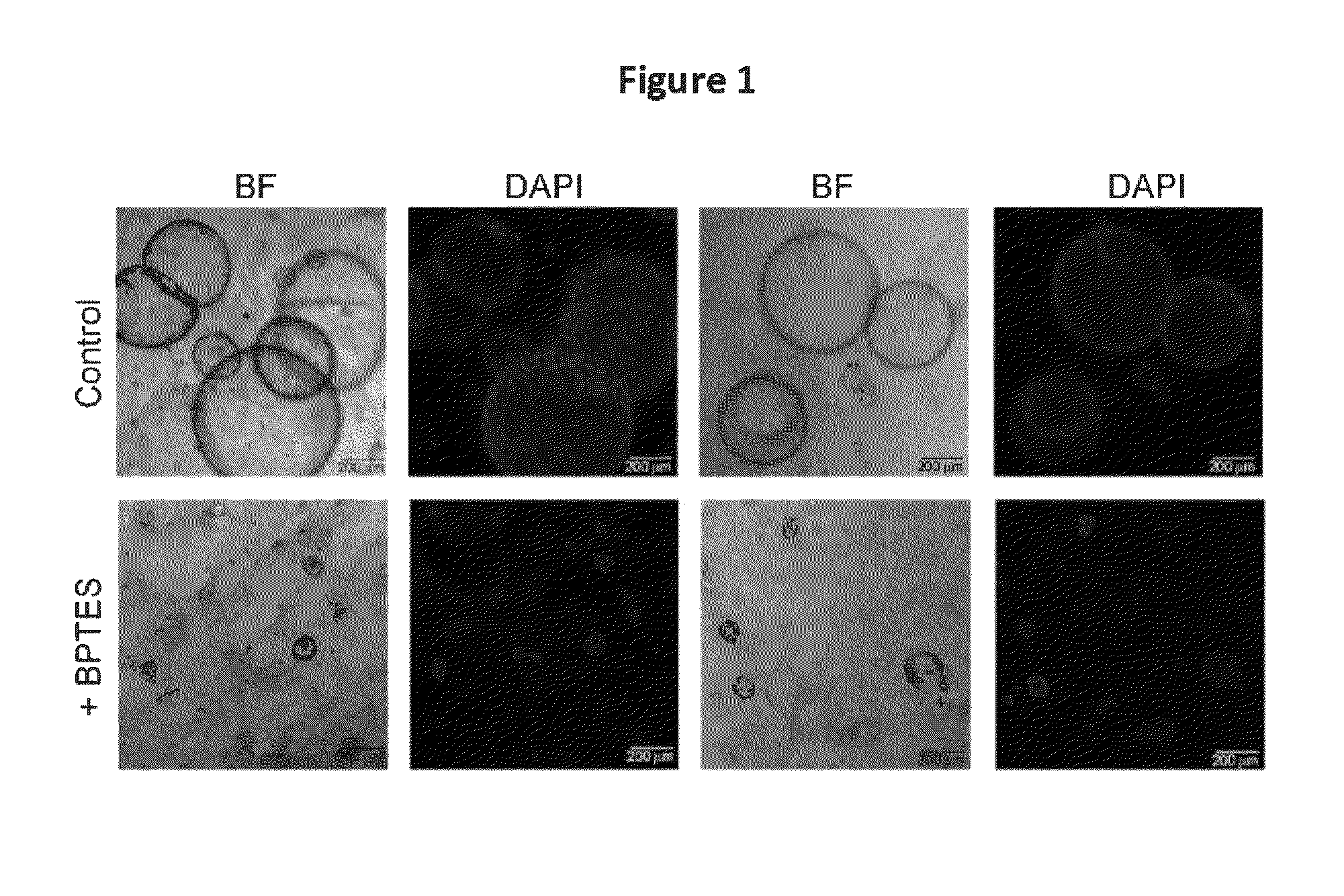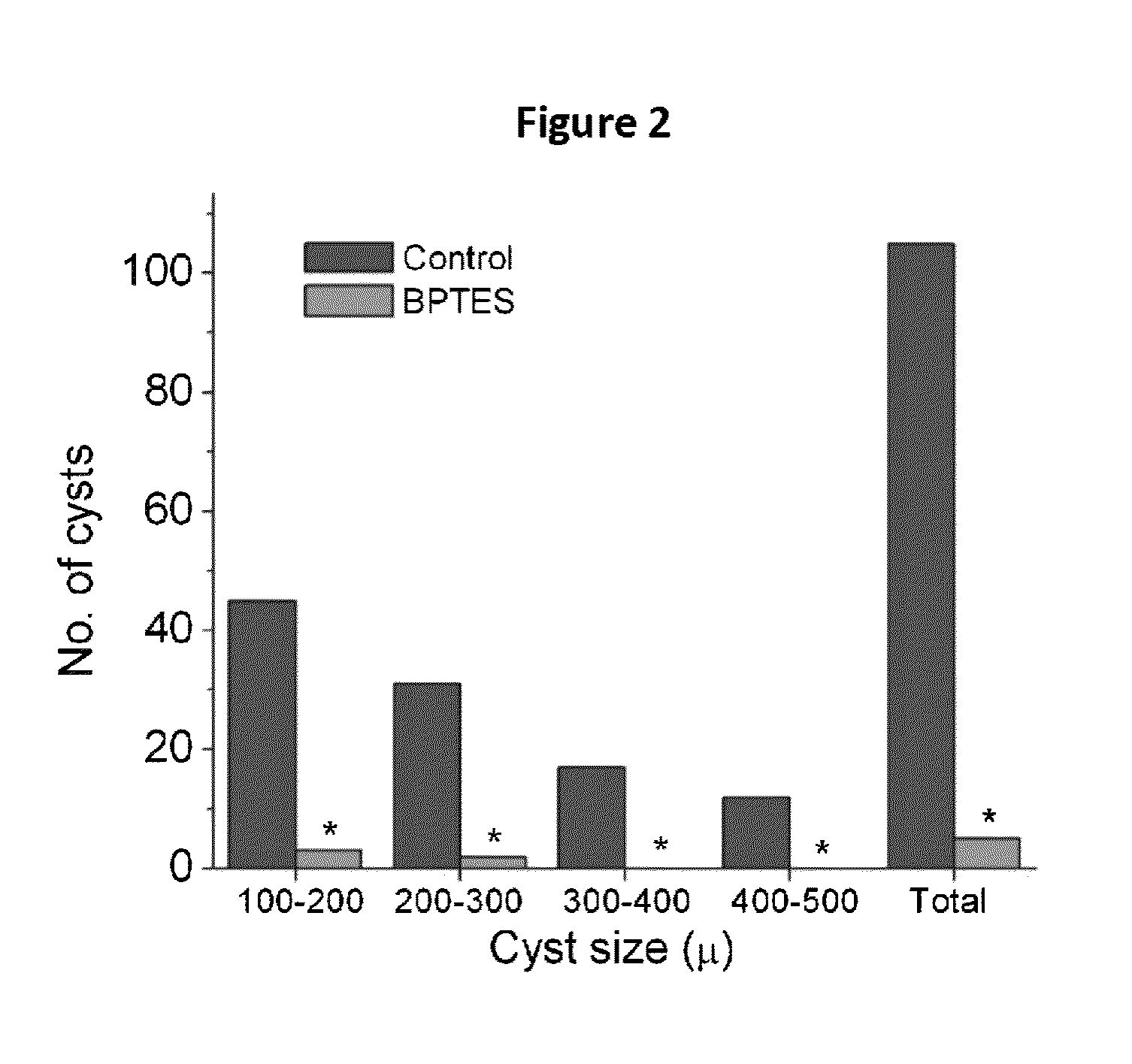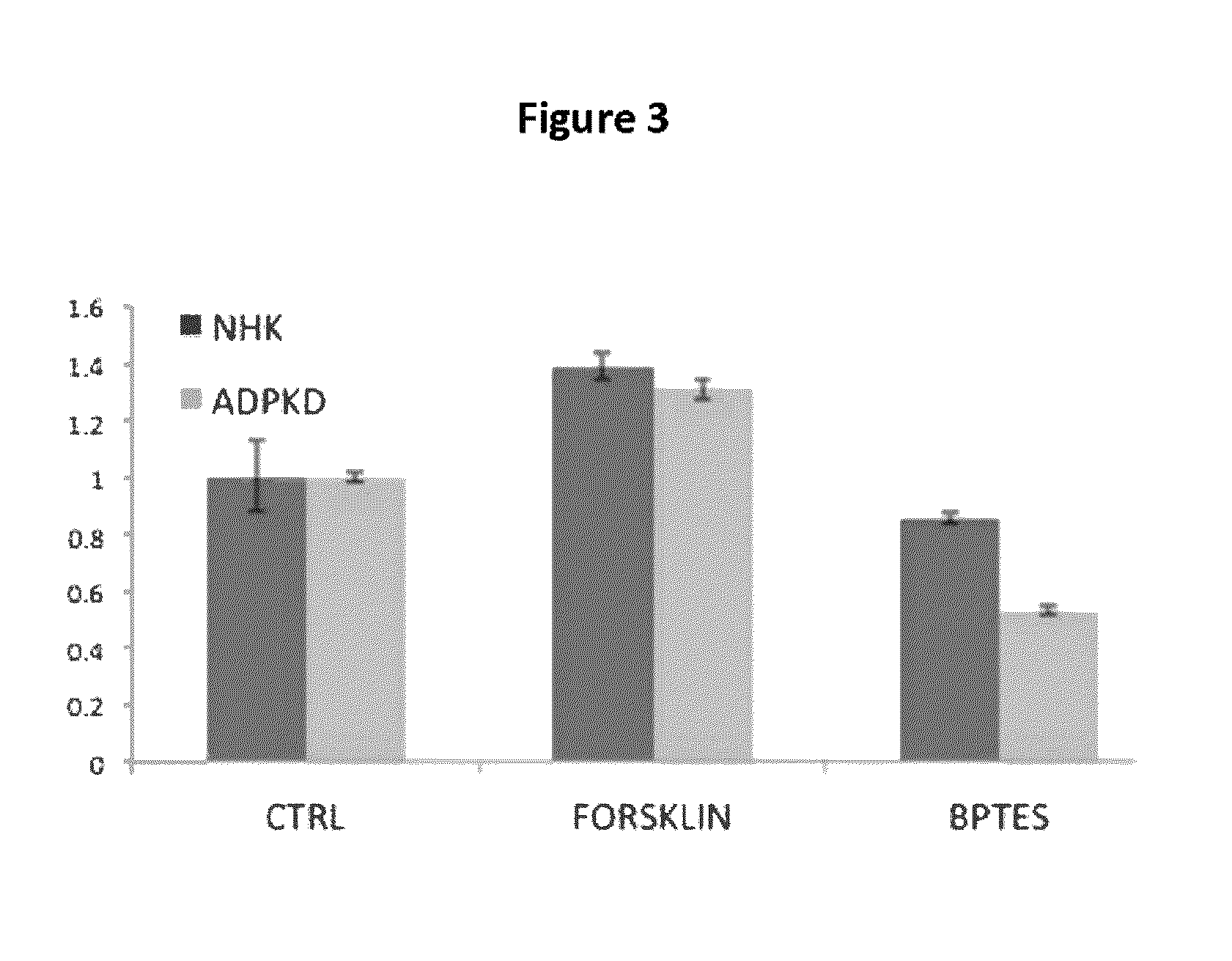Methods for treating polycystic kidney disease
a polycystic kidney and agent technology, applied in the field of agents for treating polycystic kidney disease, can solve problems such as loss of renal function, and achieve the effect of slowing down the growth of cysts and slowing down the progression of kidney diseas
- Summary
- Abstract
- Description
- Claims
- Application Information
AI Technical Summary
Benefits of technology
Problems solved by technology
Method used
Image
Examples
example 1
[0135]The present inventors have made the surprising discovery that inhibiting glutaminase 1 (gls1) blocks cyst formation and proliferation by ADPKD cells. As shown in FIGS. 1 and 2, inhibition of gls1 blocks cyst formation in vitro. ADPKD cells were plated in collagen and stimulated with the cyclic 3′-5′-adenosine monophosphate (cAMP) agonist forskolin. Cells were then cultured for 2 weeks in the presence or absence of the gls1 inhibitor BPTES bis-2-(5-phenylacetamido-1,2,4-thiadiazol-2-yl)ethyl sulfide and subsequently visualized. As depicted in FIG. 1, cysts were dramatically reduced in size and numbers responsive to BPTES treatment. The results are depicted graphically in FIG. 2, wherein the data were stratified according to both the number of observable cysts and their size. FIG. 2 shows that BPTES treatment markedly reduces the number of cysts and profoundly decreases the size of those cysts that are formed.
[0136]Elevated intracellular concentration of cAMP is characteristic o...
PUM
| Property | Measurement | Unit |
|---|---|---|
| total volume | aaaaa | aaaaa |
| concentration | aaaaa | aaaaa |
| temperature | aaaaa | aaaaa |
Abstract
Description
Claims
Application Information
 Login to View More
Login to View More - R&D
- Intellectual Property
- Life Sciences
- Materials
- Tech Scout
- Unparalleled Data Quality
- Higher Quality Content
- 60% Fewer Hallucinations
Browse by: Latest US Patents, China's latest patents, Technical Efficacy Thesaurus, Application Domain, Technology Topic, Popular Technical Reports.
© 2025 PatSnap. All rights reserved.Legal|Privacy policy|Modern Slavery Act Transparency Statement|Sitemap|About US| Contact US: help@patsnap.com



